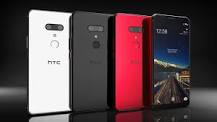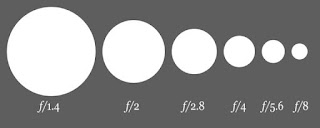IPS vs AMOLED: The differences explained
For a long time,since the first smartphone whose screen you could touch and have a response came out,IPS panels have been used. They are a type of LCD(Liquid Crystal Display) that uses In Plane Switching technology,in which the refresh and revise rates of the screen are much quicker than regular LCD,leading to faster frames and less skipped frames(like on the iPad Pro 2017,which a refresh rate of 120Hz). They were used because of the simplicity of creating them and the fact that they were really cheap to come by,and really the only option then. TFT (Thin Film Transmission)is a sort of screen tech(based on LCD) which uses really thin transistors below the touch area to remit your touches to the software,leading to much thinner and lighter devices.
Explanation of LCD in Itself
For those of us who don't know,LCD stands for Liquid Crystal Display. This type of display uses pixels that are illuminated by the use of a backlight sitting behind the panel of pixels. In other words,they are not luminous,and do not produce their own light.
Explanation of LCD in Itself
For those of us who don't know,LCD stands for Liquid Crystal Display. This type of display uses pixels that are illuminated by the use of a backlight sitting behind the panel of pixels. In other words,they are not luminous,and do not produce their own light.
Scientifically speaking, there’s no individual white light wavelength. White light is a mixture of all other visible colors in the spectrum(I.e red,orange,yellow,you know...). Therefore, LCD backlights have to create a pseudo white light as efficiently as possible, which can then be filtered into different colors in the liquid crystal element. Most LCDs rely on a blue LED backlight which is filtered through a yellow phosphor coating, producing a pseudo white light.
Power Electronics The spectral content of a single “white” LED is different from producing white light from three RGB LEDs.
.
Active AMOLED. Passive AMOLED
"One other term you will encounter is Super AMOLED, which is Samsung’s marketing term for a display that incorporates the capacitive touchscreen right into the display, instead of it being a separate layer on top of the display. This makes the display thinner.'"
The major benefits from OLED type displays comes from the high level of control that can be exerted over each pixel. Pixels can be switched completely off, allowing for deep blacks and a high contrast ratio. As you can imagine,those that watch movies on their phones will love AMOLED screens,as they offer infinity blacks,which are the best blacks available now. LG has actually cone up with a display called Super LCD,but that'll be in another post.
Summary.
The major benefits of IPS LCD are:
-It saves battery
-It can last longer than AMOLED,since the pixels cannot get burnt because they are not luminous.
-It can achieve cleaner whites and more natural colours,and hence is preferred by photographers.
-It is cheap to produce,and can be produced faster than AMOLED.
-They can get really bright,depending on the power of the backlight.
Disadvantages
-Due to the backlight,blacks look more like grey,and viewing angles are usually terrible with poor panels.
-They make phones thicker and heavier.
-They put strain on the battery when the display is set to its highest.
The Advantages of AMOLED
-It can achieve vibrant colors and deep blacks,with great contrast and infinity ratios.
-They consume low power
-The brightness along the screen can be regulated,since pixels are capable of varying the electric current passing through them,thus varying brightness.
Disadvantages
-Quite expensive to construct
-Susceptible to burn ins
-Sap battery if left on for long periods.
Verdict
So,the verdict. Left to me,AMOLED would be my first choice due to all the advantages. But ,it all depends on what a consumer wants. Given that even the almighty iPhone uses IPS LCD,it means that they have something that AMOLED doesn't. It would be nice for us go have a display that does everything we want,and has the advantages of both types mixed together, but we don't for now. So,AMOLED it is. What's your take? Use the comments box,and please share this post if you found it informative. Thanks for stopping by.
All photos courtesy of AndroidAuthotity.com







Comments
Post a Comment
Be respectful towards others and don't use this as an avenue to insult others. We take abuse very seriously and have the right to remove any abusive or immoral comment. Use this as an avenue to share your thoughts on a post. And please,stay on topic while commenting.
Thank you.